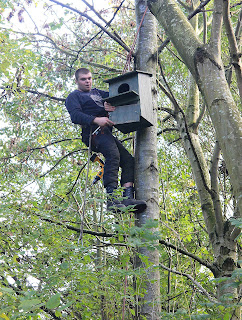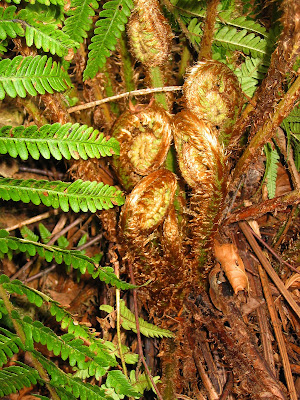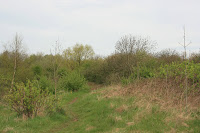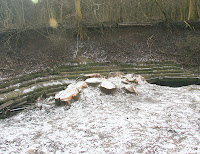
'Weeds' by Richard Mabey, pub. Profile Books, 2010 (ISBN: 978 1 84668 076 2), 324pp, £15.95.
Not far from where I live is a block of flats. Next to the block is a small car park which is separated from the pavement by a narrow verge. Whoever is responsible for managing this verge seems to have a ‘thing’ about weeds. For a few years the verge was regularly drenched in herbicide and consisted of bare earth with a few tufts of moss. But even this was not good enough for the manager who has recently covered the verge with an impermeable membrane and covered that with bark chippings. This seems an extreme reaction towards some of the, largely harmless, but occasionally inconvenient, organisms that we share the planet with.
In this fine new book Richard Mabey relates another, personal, anecdote about ‘weedophobia’. He and his partner live in a house in rural Norfolk. Outside of their house is a grassy verge which they are deemed to be responsible for. During the spring and summer months this verge produces a fine display of wild flowers, which the Mabeys allow to flourish. Nevertheless, one year some ‘busybody’ neighbours decided that the verge looked untidy and reported the Mabeys to the Parish Council. Mabey defended himself on biodiversity grounds – but when he and his partner went on holiday that year the ‘vigilante busybodies’ moved in and mowed the verge.
Apparently the situation is even worse in the US. In Houston, Texas, for example, it is actually illegal to allow weeds to grow on one’s land. And in Buffalo, New York, some poor soul is facing a bill in excess of $25,000 in fines and legal costs for defending his right to grow native wild flowers on his own front lawn!
Whenever I mention to anyone that I am interested in weeds they do two things: first they smirk and then they tell me that, “a weed is a plant in the wrong place.” But this is purely a human perspective and a weed usually grows in the ecological niche that we have created for it; as Mabey expresses it: “Weeds thrive in the company of humans. They aren’t parasites, because they can exist without us, but we are their natural ecological partners, the species alongside which they do best. They relish the things we do to the soil: clearing forests, digging, farming, dumping nutrient-rich rubbish. They flourish in arable fields, battlefields, parking lots, herbaceous borders ... Above all they use us when we stir the world up, disrupt its settled patterns.”
The word ‘weed’ is largely a pejorative term and the concept of a weed as a bad or troublesome thing probably has deep and ancient roots (excuse the pun!). Mabey discusses the Book of Genesis and notes that: “[its] denouement is exile from the carefree life of foraging to the toil of farming and the eternal curse of ‘thorns and thistles.’ Genesis formed a moral context for weeds, to stigmatise them as more than a simple physical nuisance.” Further, “the geographical references in Genesis -especially the proximity of Assyria and the Euphrates – suggest that its inspiration was some part of the area known as Mesopotamia, where agriculture had been developed 7,000 years before.” Yet, in spite of the antipathy that those ancient farmers had towards weeds (an antipathy inherited by their descendants) those weeds probably held the fragile soils of the Middle East together and prevented them from blowing away; a circumstance which would soon have brought an end to settled civilisation.
There is much more to this beautifully written book. Weeds are put into their botanical, biological, ecological and cultural contexts. We learn about what such important figures as Shakespeare, Ruskin, Clare, Jeffries, Thoreau, Manley Hopkins, Darwin, Salisbury et. al. thought and wrote about weeds and there are chapters on herbalism, weeds as foods and crops, weeds in the garden and agriculture and weeds as portrayed in the Arts. Of great relevance to today’s concerns about biodiversity there is much material on invasive alien weeds in various parts of the world, including the UK.
It has often been noted that modern humans have, largely, lost touch with Nature and are destroying it at an ever increasing rate. As a consequence our own civilisation is in as much danger as that of those early farmers in ancient Mesopotamia – the metaphorical and actual ‘soils’ on which we depend for our very existence will soon blow away. We need to stop examining our own navels start understanding the world around us - fast. Weeds, whether we like it or not (take that smirk off your face!), whether we choose to hate them or despise them or ignore them, are of fundamental importance, and because they are all around us making a study of them can considerably enhance that understanding. If you want to start that process, and go on that journey, you can’t do better than to start by reading this marvellous and timely book.
Dave Bishop, Christmas Eve, 2010


























